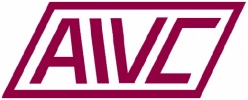The 36th AIVC conference: 'Effective ventilation in high performance buildings' was held in the city of Madrid, Spain together with the 5th TightVent and the 3rd venticool conferences in September 23-24, 2015.
Scope
The building sector plays a key role to be successful in achieving ambitious goals to reduce energy use and greenhouse gas emission. The development and revision of energy performance of buildings regulations as well as the implementation of pilot high performance building programmes reflect the growing awareness regarding the abatement potential in this sector.
However, one key concern regards provisions taken in practice to maintain acceptable indoor environmental quality while taking measures to reduce buildings’ energy use. Specifically on ventilation and infiltrations issues, indoor contaminants should be contained within acceptable limits for the health and comfort of the occupants. The overheating risk should be addressed with appropriate management of solar loads, airflow rates and thermal mass. Air infiltration losses should be minimized.
Fortunately, these challenges can be overcome in practice in conventional and in high performance buildings. However, building designs aiming for high performance are often more sensitive than conventional buildings to mistakes and inappropriate provisions for energy conservation and indoor climate.
Therefore the joint 36th AIVC, 5th TightVent and 3rd venticool Conference aimed to focus on effective ventilation in high performance buildings, with the following major themes:
- Thermal comfort and ventilative cooling—i.e., the application of ventilation airflow rates to cool indoor spaces and avoid overheating in buildings;
- Air infiltration through leaks in the building envelope and ductwork;
- Ventilation in relation to Indoor Air Quality and health.
Conference Organisers
The conference was an initiative from::
- the International Network on Ventilation and Energy Performance (INIVE) on behalf of the Air Infiltration and Ventilation Centre (AIVC), TightVent Europe (the Building and Ductwork Airtightness Platform), and venticool (the international platform for ventilative cooling); and
- The Eduardo Torroja Institute for Construction Science - IETcc-CSIC
Conference concept
The conference consisted of 3 parallel tracks:
- One track will to a large extent be devoted to ventilative cooling;
- One track will to a large extent be devoted to airtightness issues;
- One track will to a large extent be devoted to ventilation in relation to IAQ and health.
The conference consisted of a mixture of:
- Well‐prepared structured sessions focused on the conference topics;
- Presentations on invitation;
- Presentations from call for papers.
Conference topics
For ventilative cooling aspects:
- Potential for ventilative cooling strategies
- Ventilative cooling in energy performance regulations
- Design approaches and control strategies for ventilative cooling and case studies
- Thermal comfort and ventilation
- Coupling of ventilation with cooling systems
- Ventilative cooling technologies such as multi-skin facades, ground coupled heat exchangers
- IAQ impacts from outdoor sources
- Acoustical issues from outdoor and indoor sources
For airtightness related aspects:
- Infiltration measurement techniques and IR thermography
- Durability of building and ductwork airtightness
- Energy and IAQ impact of envelope and ductwork leakage
- Design and construction approaches for airtight buildings
- Risks related to airtightness
- Optimal airtightness levels
For ventilation in relation to IAQ and health aspects:
- IAQ impacts from outdoor sources
- Possibilities and limitations of CO2 and other indicators for IAQ control
- Humidity control and moisture damage
- Ventilation in renovated buildings
- Characterization of air cleaning technologies
- IAQ aspects in ventilation regulations
- Heat recovery issues (freezing, natural ventilation, …)
Other aspects relevant to the conference include:
- Smart ventilation control and smart grids
- Compliance schemes and barriers to innovation
- Controls and user interaction
- Fan energy use
- Innovative ventilation concepts and combined systems
- BIM (Building Information Modelling) and ventilation systems
For further information please visit: https://www.aivc.org/event/23-24-september-2015-conference-madrid-36th-aivc-conference




